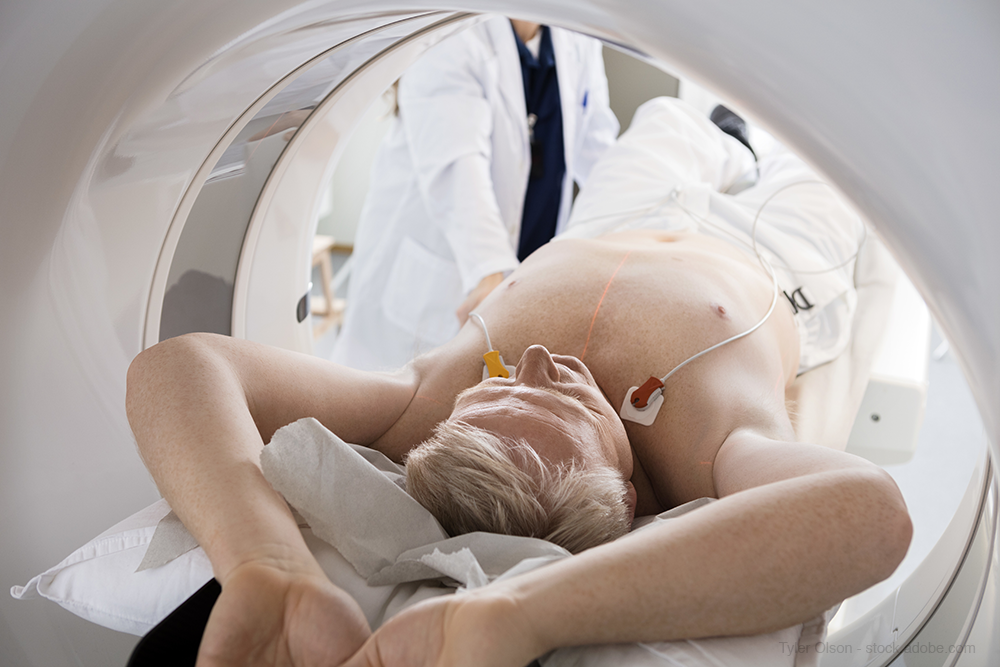CT Viable Alternative to Cardiac MRI for When Assessing Heart Chamber Size
Axial chest CT identifies enlargement with high specificity and reasonable sensitivity.

Computed tomography is a viable alternative to cardiac MRI for assessing heart chamber enlargement, according to a study published in the American Journal of Roentgenology.
Researchers from Canada performed a retrospective study to establish sex-specific chest CT measurement thresholds for detection of cardiac chamber enlargement with cardiac MRI as the reference standard.
Related article: Cardiac Findings Should Be Noted on Chest CT When Observed
Study subjects included 115 men and 102 women (mean age 52.8 years) who underwent contrast-enhanced chest CT (64- or 320-MDCT) and cardiac MRI within a 7-day interval between August 2006 and August 2016. Measurements were performed on axial CT images to evaluate right atrial (RA), right ventricular (RV), left atrial (LA), and left ventricular (LV) chamber size. The presence of chamber enlargement (RAE, RVE, LAE, and LVE) was established with cardiac MRI as the reference standard. ROC analysis was performed. Optimal sex-specific CT measurement thresholds were identified that ensured specificity of 90% or greater and maximized sensitivity.
Prevalence of chamber enlargement:
The following CT measurement thresholds were optimal:
- For RAE, RA transverse diameter ≥67 mm for men (AUC, 0.825) and ≥64 mm for women (AUC, 0.926)
- For RVE, RV transverse diameter ≥60 mm for men (AUC, 0.846) and ≥57 mm for women (AUC, 0.858)
- For LAE, LA anteroposterior diameter ≥50 mm for men (AUC, 0.795) and ≥45 mm for women (AUC, 0.841)
- For LVE, LV transverse diameter ≥58 mm for men (AUC, 0.917) and ≥53 mm for women (AUC, 0.840)
The researchers concluded that cardiac chamber enlargement can be identified with high specificity and reasonable sensitivity on axial chest CT images by use of sex-specific measurement thresholds.
What is the Best Use of AI in CT Lung Cancer Screening?
April 18th 2025In comparison to radiologist assessment, the use of AI to pre-screen patients with low-dose CT lung cancer screening provided a 12 percent reduction in mean interpretation time with a slight increase in specificity and a slight decrease in the recall rate, according to new research.
The Reading Room: Racial and Ethnic Minorities, Cancer Screenings, and COVID-19
November 3rd 2020In this podcast episode, Dr. Shalom Kalnicki, from Montefiore and Albert Einstein College of Medicine, discusses the disparities minority patients face with cancer screenings and what can be done to increase access during the pandemic.
Can CT-Based AI Radiomics Enhance Prediction of Recurrence-Free Survival for Non-Metastatic ccRCC?
April 14th 2025In comparison to a model based on clinicopathological risk factors, a CT radiomics-based machine learning model offered greater than a 10 percent higher AUC for predicting five-year recurrence-free survival in patients with non-metastatic clear cell renal cell carcinoma (ccRCC).
Could Lymph Node Distribution Patterns on CT Improve Staging for Colon Cancer?
April 11th 2025For patients with microsatellite instability-high colon cancer, distribution-based clinical lymph node staging (dCN) with computed tomography (CT) offered nearly double the accuracy rate of clinical lymph node staging in a recent study.